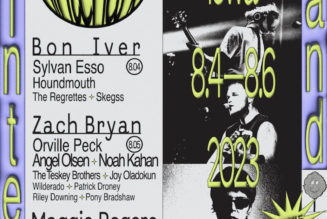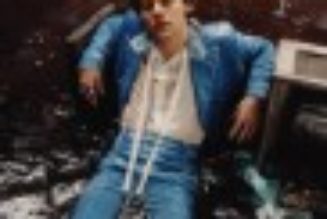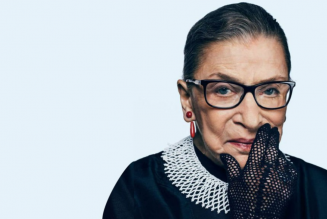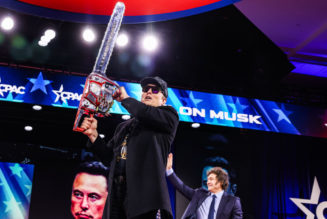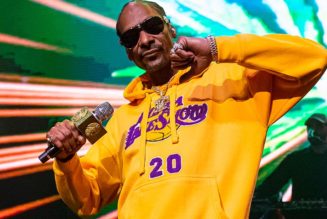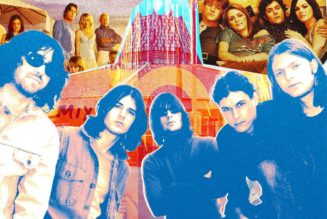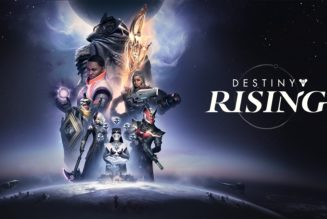An open-top car glides through the moonlit Californian night, its passengers gazing out at the star-filled sky. It pulls up at a beach house where a rowdy party is being thrown. The four young people in the convertible look at each other and, silently agreeing that it’s just not their scene, drive on.
More like this:
– Gen Z’s surprising midsummer pasttime
– Paul McCartney’s unseen photographs
– Should we bring singers back from the dead?
The 1999 Volkswagen advert is 60 seconds long but nearly a quarter of a century later, viewers are still posting online about its profound impact, not because of the stylish visuals but because of the haunting music accompanying them: Nick Drake’s Pink Moon.
The English singer-songwriter died in 1974 at the age of just 26. He had released three albums which didn’t make much of a splash during his lifetime, but which gradually gathered a cult following after his death. The US commercial sparked a major upsurge of interest in his work.
A major new biography of Drake is correcting misconceptions around the singer’s life and death (Credit: Victoria Waymouth)
And now, almost half a century after his death, Drake is being rediscovered all over again. The Endless Coloured Ways, a collection of 23 of his songs by artists such as David Gray, Fontaines DC, Self Esteem and John Grant, is released this Friday, and a definitive new biography, Nick Drake: The Life, by Richard Morton Jack, has just been published.
The biography contains no shocking new revelation, no discovery that turns on its head everything we thought we knew about Drake, but rather provides an absorbing portrait of the man and his milieu through the accumulation of fascinating detail. It also serves to correct many misconceptions.
The myths about him
“Quite a lot of assumptions have arisen because people tend to mythologise these iconic entertainment figures who die young,” Morton Jack tells BBC Culture. “And actually, peeling that back and getting a really good consensus from a large spread of people who knew him in different ways was very satisfying.”
The author interviewed 200 people from all areas of Drake’s life and was given access to his family’s private papers. His research suggests that, contrary to what some believe, the musician was not a heroin addict; he was not gay; he had not been abused at school; and conflict with his father was not at the root of his problems.
“There was quite a lot of small detail that I was able to fill in,” says Morton Jack, who recently visited the Wikipedia page on Drake and gave up counting the factual errors when he reached 50. “Speaking to everyone, it wasn’t as if some people had one impression and other people had another. There was quite a strong consensus, not just about his personality but also about his behaviour. So, for example, one of the absolute givens about him has been that he smoked a quite unbelievable amount of dope and was completely damaged by drugs. Well, no one who knew him says that.”
Although Drake gave a grand total of two press interviews during his career, the basics about his brief life have long been known. Nicholas Rodney Drake was born on 19 June, 1948, and grew up in Warwickshire in a loving, musical family. He first picked up a guitar when he was 16 while at the prestigious school Marlborough College and, by the time he went to Cambridge University in 1967 to read English, he was already set on a career in music.
A gifted guitarist with a distinctive style, he wrote folk-adjacent songs that were wistful, delicate, dreamy and often, but not always, melancholy. His first album, Five Leaves Left, was released on 4 July 1969, a few months before he dropped out of university. The music press was dominated by the news of Brian Jones’ death on 3 July and the Rolling Stones concert in Hyde Park two days later. There was no single from Five Leaves Left and next to nothing in the way of promotion from Drake, apart from a session for a late-night Radio 2 arts programme presented by John Peel. The album attracted little attention and sold poorly.
Emeli Sandé is one of a number of renowned musicians who have contributed a Nick Drake cover to new album The Endless Coloured Ways (Credit: Alamy)
It was the same story with the next two; 1971’s relatively upbeat Bryter Later and 1972’s much starker Pink Moon. There was limited publicity and Drake’s eventual refusal to play live did not help. His last proper live performance ever was in 1970 and he played little more than 30 shows in his whole career. He simply didn’t enjoy it. “There were only two or three concerts that felt right, and there was something wrong with all the others,” he said in one of those two press interviews, in 1971 with Sounds magazine. He had champions in the celebrated producer Joe Boyd and in the Velvet Underground’s John Cale, who had insisted on working with him, but it wasn’t enough. Drake became seriously depressed and returned to live with his parents, telling his mother “I’ve failed in every single thing I’ve ever tried to do”. He saw psychiatrists, spent five weeks in a psychiatric facility and was even treated with electroconvulsive therapy.
On the morning of 25 November 1974, he was discovered dead in his bedroom. A pill bottle that had contained around 60 prescription anti-depressant pills was found empty beside him. The pathologist found evidence of a “serious overdose”. And that might have been the end of the Nick Drake story – three albums that failed to trouble the charts and a life full of potential tragically cut short.
His musical afterlife
But as Morton Jack reports, within a couple of years of his death, something unexpected started happening. The first sign was when a 21-year-old American woman began ringing the Drakes’ house in March 1976. She had bought Pink Moon at a record store in Houston, Texas, and wanted to find out everything she could about the mysterious artist behind it, even travelling to England to learn more. Nick’s mum and dad invited her in and let her stay the night. She was just the first of many ardent fans who would make the same pilgrimage as Drake’s reputation grew and grew. In due course, compilation albums were released and soon major artists such as REM, Kate Bush and Everything But the Girl were citing Drake as an important influence.
After the VW advert, according to US music journalist Amanda Petrusich’s 2007 book on Pink Moon, sales of the album “increased nearly 500% during the first 10 weeks of 2000, when Drake shifted more than 4,700 copies of Pink Moon, compared to 815 in the same period in 1999”. The New York Times reported in 2001 that sales had jumped from about 6,000 copies a year to more than 74,000.
So it is that Drake has gone from relative obscurity during his lifetime to appearing on the cover of music magazines, being the subject of a Radio 2 documentary presented by Brad Pitt, and having his music appear in mainstream Hollywood movies such as A Beautiful Day in the Neighbourhood and hit TV shows such as Normal People. He’s even had a beer named after one of his songs by a Californian craft brewery.
Musician Paul Weller, comedian and broadcaster Sue Perkins, microbiologist Sharon Peacock and award-winning Jamaican writer Marlon James are among the guests who have selected Nick Drake numbers on Radio 4’s Desert Island Discs. James said he put a Drake record in his CD player in 1993 and did not take it out until 1998: “I played it nearly every night… every time it plays there is this ghost in the room.”
Hit romantic drama Normal People is among the TV shows and films that made memorable use of Drake’s music (Credit: Alamy)
Emeli Sandé is among the artists on the new compilation album, covering One Of These Things First. She tells BBC Culture that she believes Drake’s popularity has continued to grow “because of the purity in the music and also the depth. His lyrics are poetry. I think they really are timeless. No matter how many times you go back and listen, you find something new in the music each time you do. Also there isn’t really that much out there about his thoughts [on his lyrics], and that allows everyone to have their own interpretation.”
The Endless Coloured Ways takes its title from a line in From the Morning, a song on Pink Moon which, unlike Drake’s previous albums, is very stripped down. Some fans see its songs as bleak evidence of his deteriorating mental condition: Fairport Convention’s Richard Thompson, who had played on a couple of numbers on the earlier albums, was “disturbed” when he heard the LP. It “seemed a stark cry for help. The voice of a man teetering on the edge of sanity,” he writes in his 2021 memoir Beeswing.
Others feel differently. Let’s Eat Grandma perform an affecting version of From the Morning on the new album. “Pink Moon is the record of Nick Drake’s that I’m most connected to and the one that I was listening to all the time in lockdown. It was my initial introduction to him,” says Let’s Eat Grandma’s Jenny Hollingworth. “At the time I had had a personal loss, my boyfriend had passed away. But rather than being a depressing record, I felt as though the songs were meeting me where I was emotionally.
“Every time I finished listening to the album, I felt really moved by From the Morning, which ends it. It sounds so hopeful. This is obviously just my interpretation but it feels as though it’s about striving to live and appreciate life. It really resonated with me.”
The headstone on Drake’s grave in St Mary Magdalene churchyard, Tanworth-in-Arden, is inscribed with a From the Morning lyric. It says: “Now we rise and we are everywhere”. Drake’s intended meaning may be uncertain but the line is certainly true of his fans.
The Endless Coloured Ways is released on 7 July, and Nick Drake: The Life by Richard Morton Jack is out now.
If you would like to comment on this story or anything else you have seen on BBC Culture, head over to our Facebook page or message us on Twitter.
And if you liked this story, sign up for the weekly bbc.com features newsletter, called The Essential List. A handpicked selection of stories from BBC Future, Culture, Worklife and Travel, delivered to your inbox every Friday.

